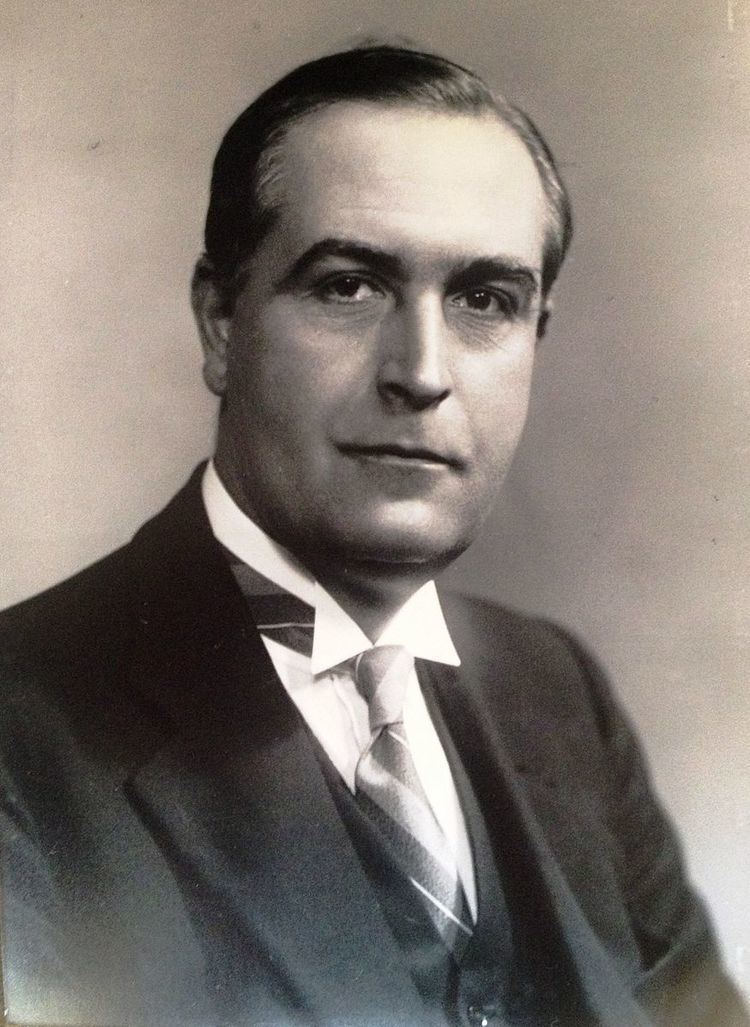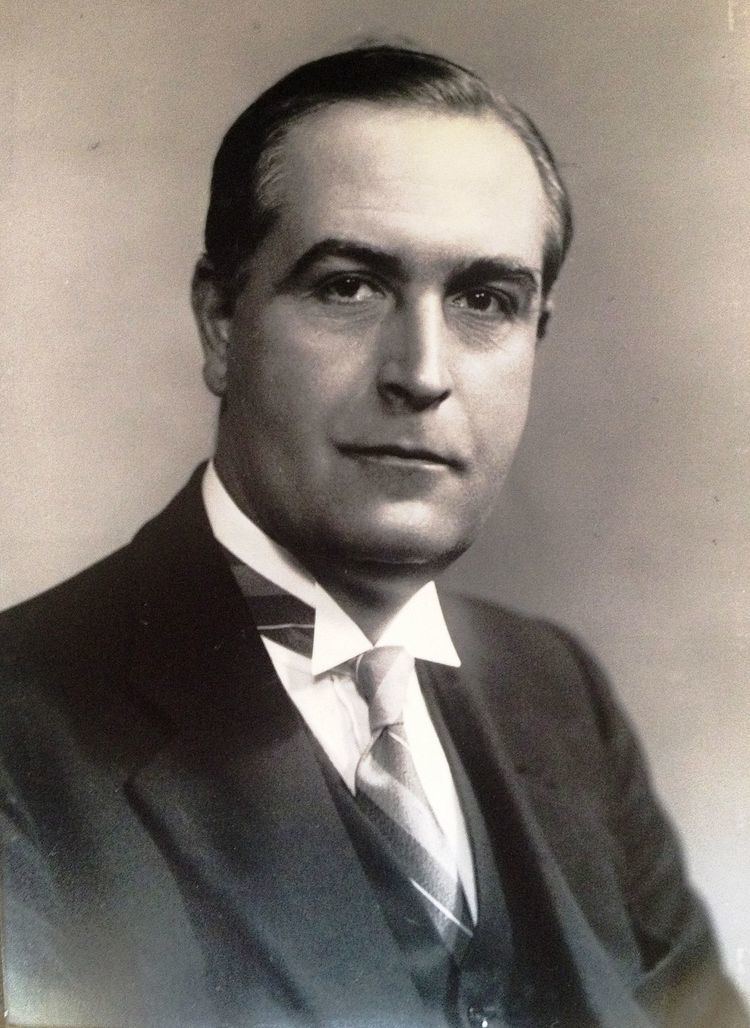Nationality Irish Occupation Architect | Name Alfred Jones Died June 29, 1973 | |
 | ||
Born 14 August 1894 Shorncliffe, Kent, England | ||
Alfred Edwin Jones (1894–1973) was an eminent Irish architect. His collection of files about Irish architects formed the basis of the Dictionary of Irish Architects 1720–1940.
Contents
- Childhood and youth
- Professional career early years
- Professional career mature years
- Wider interests
- Death of
- Awards honours and memberships
- References

Childhood and youth
Alfred Edwin Jones, only son of Felix Thomas Jones and Mary Mitchell, was born in Shorncliff, Kent, England, on 14 August 1894. He spent his early childhood in Rawlpindi where his father was a sergeant major in the 4th Royal Irish Dragoon Guards. On his father’s retirement from the service in 1895 the family moved to Dublin, Ireland. Educated by the Jesuits at Belvedere College, Alfred pursued a variety of careers before becoming apprenticed to the architectural practice of Ashlin & Coleman c. 1911. He first attracted notice about this time when his measured drawing of the ceiling of Belvedere's Apollo Room was featured in the Irish Builder. A design for an iron railing and gate which won him the Gold Medal at the Father Matthew Feis, two years later, was published in the same journal. Earlier illustrations by Jones had appeared in the third, fourth and fifth volumes of the Irish Georgian Society Records (1911–1913). By 1914 he was an assistant in the practice of Rudolf Maximilian Butler with a growing reputation. In 1918 his drawings of the Marino Casino won him the Downes Bronze Medal of the Architectural Association of Ireland, according to the judges, ' one of the finest specimens of draughtsmanship ever produced by a member of the Association'.
Professional career: early years
In 1919 Jones spent some months in partnership with Aubrey Vincent O’Rourke. Later that year he set up practice with Stephen Stanislaus Kelly whom he had known since childhood. In 1920 they won the competition for Ballymena Town Hall, and in 1923 were winners of the Cork City Hall design competition. They remained in practice, under the title 'Jones & amp; Kelly' until Kelly’s death in 1951. Subsequently Jones took his son Felix Alfred Jones and his elder daughter, Elisabeth Fleming, into partnership, providing consultancy services to the firm for the remaining years of his life.
Professional career: mature years
Alfred Jones & Stephen Kelly had a wide-ranging practice, involving the design of ecclesiastical and educational structures as well as cinemas, theatres, manufacturing plants, commercial buildings and housing schemes. Among their most notable achievements were: 'Screen Cinema, Eden Quay, Dublin (1920, 1930; Ballymena Town Hall, Co Antrim (1928); Church of the Four Masters, Friary, Athlone, Co. Westmeath (1930); Mount Mellerary Cistercian Abbey, Co Waterford (1924–27, 1933); DeLuxe Cinema, Camden Street, Dublin (1933); The Green Cinema, St. Stephen's Green, Dublin (1935); Columban missionaries, Dalgan Park, Co Meath (n/d); Cork City Hall (1936) [Its Concert room is renowned for its superb acoustic]; Irish Pavilion for Empire World Exhibition, Glasgow (1938); The National Stadium (1939); St. Francis Church, Cork City (1949); Mill Hill missionaries, Freshford, Co Kilkenny (n/d); Dublin Corporation Unbuilt Proposal, Wood Quay (1957). For the first quarter century of its existence Jones & Kelly was a practice of the old school, offering apprenticeships to applicants, over a hundred of who were indentured until the mid 1940s. Several were later to become notable Irish architects, including Timothy Joseph Ahern, Basil Boyd Barrett, Rupert Boyd Barrett, Jackie Collins, John Peter Butler, Vincent Gallagher, Patrick F. McDonnell, Dermot O’Dwyer, Donal O’Dwyer and Michael Scott. The latter who worked in the practice between 1923–1926, and much later designed Dublin's Busáras (bus station) and other buildings in the modern style, regarded Jones & Kelly's preoccupation with the Gothic, Renaissance or Romanesque as a straitjacket which was out of date and outmoded.
Wider interests
Alfred Jones was a man whose interests ranged well beyond the confines of his profession to embrace the historical, artistic and sporting. He had a lifelong interest in Archaeology and Egyptology. In the last decades of his life he devoted much of his time in producing a comprehensive biographical index of Irish architects and engineers. He also trawled the Irish Builder for interesting material, transcribing his findings. The results of this labour, deposited in 1980, are now are to be found in the Irish Architectural Archive, and are central to the Archive's database of Irish architects from 1720 to 1940. Fittingly his portrait adorns the I.A.A. reading room with an inscription paying tribute to the wealth and quality of his research. Alfred Jones was also a philatelist and possessed a highly regarded collection of early French and French Colonial stamps. In addition he was a violinist who as a young man was known to have performed in the La Scala Theatre, Dublin. His sporting interests included life membership of the Old Belvedere Rugby Football Club and the Irish Amateur Boxing Association whose home (the National Stadium) had been designed by Jones & Kelly. Alfred was also a trustee of the organisation and served as its President for over 20 years.
Death of
Dying on 29 June 1973 Alfred Jones was interred in the cemetery at Tallaght, Co. Dublin, on 2 July. He was survived by his wife of 50 years Mary (née Ardiff) (1892–1986), and by his three children: Elizabeth, Felix, and Marie, a distinguished musician. Elizabeth and Felix maintained the practice of Jones & Kelly after their father's death.
Awards, honours and memberships
AAI: elected member, 1913; winner of President's Prize for session 1914–15 with design for conversion of old houses into flats; winner of Downes Bronze Medal for session 1917–18; hon. sec., 1917–1920; exhibits measured drawings and perspective view of design by W.M. Mitchel & amp; Sons for Irish Agricultural Wholesale Society premises, Thomas Street, at exhibition of members' work, March 1918; hon. treasurer, 1925–26; vice-president, 1927–28; president, 1930–31. RIAI: elected student, 1918; elected member, 1921; raised to fellow, 1932; elected vice-president, 1950. Institute of Architects & Surveyors: fellow.
RSAI: fellow. RIA: member
